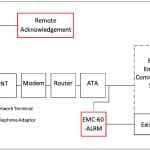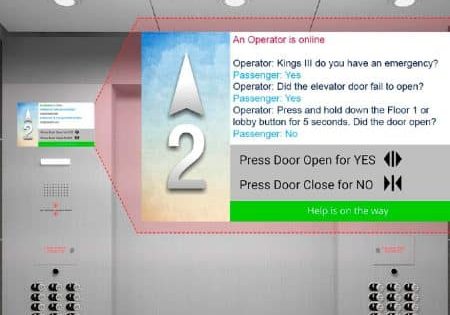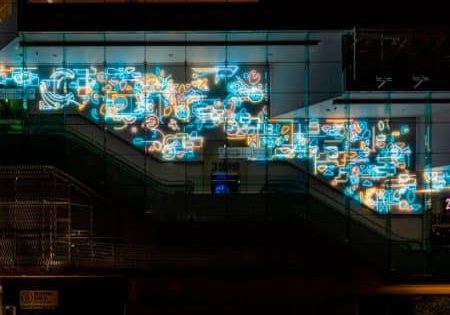New Skills for New Communications
Apr 1, 2020
In this Readers’ Platform, networking, firewalls, video, VoIP and more are discussed.
by Peter Rampf
Can an adjuster do it all? Emerging trends in elevator communication systems are not making an implementer’s job any easier. Elevator contractors have seen communications requirements consistently increase in complexity. First, we had the alarm bell, then the handheld handset, followed by the hands-free phone and, finally, phone line monitoring. Multicar groupings and internet-based telephony further complicate things.
With ASME A17.1-2019, the introduction of text and video requirements bring added complexity to the mix. Fortunately, an installer can seek the assistance of a capable communications system partner, which will provide not only the materials required, but also the expertise and training necessary to navigate the requirements.
Training will surely be the key as the more experienced adjusters are promoted and younger tech-savvy technicians embrace the technology. Networking and video are everywhere and becoming the norm.
Contending With Non-Traditional Communication Lines
The traditional analog copper “landline” is being phased out and replaced by citywide fiber-optic and cellular networks that are digital. There is still a place for two-wire copper connections in elevator communications for the foreseeable future, but structured cabling and even wireless “mesh” networks will surely take over and provide the communication infrastructure. We need to ensure that implementing the new technology delivers cost savings. The most economical solutions when contending with digital lines are varying degrees of “hybrid” VoIP/analog installations. Examples in increasing levels of complexity are shown in Figure 1. Nevertheless, the most valuable “technician” will be expected to understand and do it all.
Three VoIP Levels Explained
Level 0: POTS analog basics: learn the old systems from the gurus – cabling (copper), voltages, signaling (DTMF, wink, etc.), call progress tones (ring, busy, re-order, etc.), noise (interference), etc. To clarify the most common misconception regarding the grounding of the STP cable, especially in the traveling cable, do not ground both ends, as even very small momentary differences in potential between the ground in the cab and in the controller will cause varying currents in the shield. These currents radiate this “noise” to the twisted pair. Ground the shield on a shielded cable at one end only, ideally at the controller for a traveling cable, and be sure the shield at the other end is well-insulated.
Level 1: Analog POTS communication in a building is converted to digital VoIP by a module called an ATA, built into or connected to the ONT, especially in a building that converts an existing copper landline to fiber optic.
Level 2: Analog POTS communication for an elevator with the STP in the traveling cable connected to an ATA and an Ethernet network in the machine room requires nagivation through firewalls and other network security. Hence, there is a need for basic networking skills.
CAT-5 or CAT-6 can carry ethernet up to 300 ft, beyond which a LAN extender is required, using DSL over two-wire UTP or STP (Figure 1).
Level 3: Ethernet is run directly to/from the cab to convey voice communications, which is especially viable when another Ethernet application, such as video in the cab, is required. (See the new code requirements below.)
Building Ethernet is connected to the external fiber-optic network at the ONT, usually in the building telephone room, requiring battery backup for every step along the way.
The multiplexing of signals on one STP has many advantages but requires special techniques for troubleshooting.
Text and Video Requirements
ASME A17.1-2019/B44-19 Safety Code for Elevators and Escalators Section 2.27.1.1 requires video of passengers inside the car to be viewed by the remote monitoring station operator when answering the two-way voice call while displaying text messages in the cab, allowing the operator to ask questions and receive responses from a passenger who cannot hear or speak.
An IP video camera in the cab requires the VoIP Level 3 scheme in Figure 1 for Ethernet in the cab, with a switch added to connect the camera. The camera or VMS can transmit an email to the monitoring station. The email is to include a link for the operator who answers the call to view the video stream (in the format required by the monitoring-station software).
This is where basic networking and camera configuration, along with the help of a communications provider, are required. Setup is probably as easy as for your home network.
The text display is controlled by the cab phone, automatically displaying the messages required by the code and providing a verbal feedback and menu of questions to text the passenger. The LCD, “Yes” and “No” buttons simply connect to the phone.
Existing Code With VoIP – Phone Line Monitoring Requirements
ASME A17.1/CSA B44 Safety Code for Elevators and Escalators Section 2.27.1.1.6 requires verification of the operability of the phone line or “equivalent means” for two-way communications and the triggering of an alarm if not functional.
The conventional phone line monitoring techniques for copper landlines measure line voltage (or detect dial tone). Most ATAs generate a dial tone and line voltage with or without the network connection, which will satisfy the traditional monitoring systems and not trigger the alarm, even though the operability of the fiber-optic/cellular/internet VoIP connection is not verified.
One solution is to ping a remote connection, which will respond through the ATA and, if the response is not received, generate the alarm intended by the elevator safety code. The EmerCom EMC60ALRM, shown in Figure 4, which can be retrofitted to any generic conventional system converted to VoIP, is one solution.
Summary
The emergency communication landscape is changing and becoming increasingly complex. Finding a solutions provider capable of partnering with contractors to assist in navigating this landscape will be essential in responding to the diverse needs and technically demanding solutions required in today’s marketplace.
- Figure 1: Three VoIP hybrid levels (L1, L2 and L3)
- Figure 2: ONT: Fiber, power, Ethernet and POTS
- Figure 3: Copper landlines converted to optical fiber: verifying telephone line operability for fiber optics
Glossary
• ATA – Analog telephone adaptor
• DSL – Digital subscriber line – Ethernet over one copper pair
• DTMF – Dual-tone multi-frequency
• LAN-Ex – Local area network (Ethernet) extender
• LCD – Liquid crystal display
• ONT – (Fiber) optical network terminal
• PLM – Phone line monitoring
• POTS – Plain old telephone service
• STP – Shielded twisted pair (electromagnetic interference [EMI] protection with shield
and rejection)
• UTP – Unshielded twisted pair (EMI rejection)
• VoIP – Voice over internet protocol
• VMS – Video management system
Get more of Elevator World. Sign up for our free e-newsletter.












